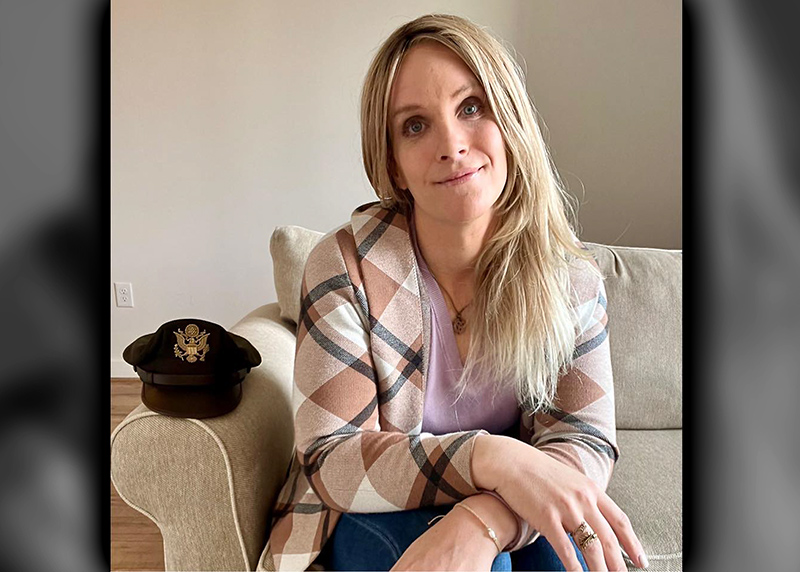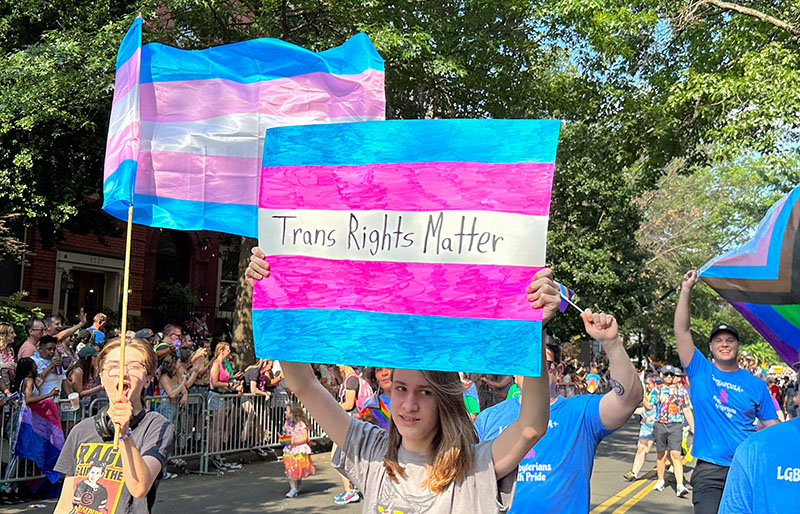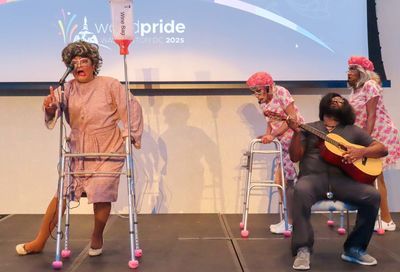Two percent of high school students identity as transgender, almost as many “not sure”
CDC's report, which also found that transgender students are more at risk than their peers, has been called "groundbreaking"

A new survey has found that almost two percent of American high school students identify as transgender.
The findings come courtesy of the CDC’s biannual Youth Risk Behavior Surveillance (YRBS) report, which interviewed over 130,000 students across 19 states and school districts, including Colorado, Hawaii, Maryland, Michigan, Vermont, and urban districts including Los Angeles and New York City.
In addition to asking students about their identity, the CDC’s survey also asked students about how at risk they are of suicide and violence, and their sexual experiences.
The headline statistic is that, on average, 1.8% of students surveyed self-identified as transgender, with a further 1.6% saying that are “not sure” if they are transgender.
The CDC partnered with organizations including GLSEN to broach the subject with students, with Caitlin Clark, a research associate at GLSEN, telling NBC News that it was “the first time this question was asked.”
Clark added: “We’ve worked together to figure out the best way to assess gender identity in a way that youth understand.”
However, the CDC also corroborated previous evidence that transgender students are more at risk than their cisgender peers.
Per the CDC’s report: “Transgender students were more likely than were cisgender students to report violence victimization, substance use, and suicide risk, and, although generally more likely to report sexual risk behaviors, were also more likely to report having been tested for [HIV].”
Among the findings:
- More than one-third (34.6) of transgender youth had attempted suicide in the past 12 months, compared with 5.5% of cisgender males and 9.1% of cisgender females;
- Transgender youth were more likely to have used illegal substances, with at least a quarter having tried cocaine, heroin and methamphetamines, and almost 36% having misused prescription drugs;
- 27% of trans students feel unsafe at or going to/from school, while 35% say they are bullied at school;
- Transgender youth are more likely to have had sex, more likely to have had it at a younger age, and less likely to have used a condom during their last sexual experience.
“Transgender youths in high school appear to face serious risk for violence victimization, substance use, and suicide, as well as some sexual risk behaviors, indicating a need for programmatic efforts to better support the overall health of transgender youths,” the CDC said. “Taking steps to create safe learning environments and provide access to culturally competent physical and mental health care might be important first steps to improving the health of transgender youths. Continued research into the health of transgender youths and development of effective intervention strategies are warranted.”
In a statement, Amit Paley, CEO of The Trevor Project, called the study “game-changing.”
“By collecting data inclusive of gender identity, the report shows the very real health risks faced by transgender and gender non-conforming youth,” Paley said. “The CDC’s findings highlight the need for even more policies to protect transgender and gender nonconforming youth.”
However, Paley said that more research is needed, and that the Trevor Project would “continue to educate and encourage decision-makers across the country to adopt the gender identity and expression questions in the next round of YRBS surveys.”
He added: “Only by understanding who our youth are and how they identify can we craft policies to allow every young person to thrive.”
Support Metro Weekly’s Journalism
These are challenging times for news organizations. And yet it’s crucial we stay active and provide vital resources and information to both our local readers and the world. So won’t you please take a moment and consider supporting Metro Weekly with a membership? For as little as $5 a month, you can help ensure Metro Weekly magazine and MetroWeekly.com remain free, viable resources as we provide the best, most diverse, culturally-resonant LGBTQ coverage in both the D.C. region and around the world. Memberships come with exclusive perks and discounts, your own personal digital delivery of each week’s magazine (and an archive), access to our Member's Lounge when it launches this fall, and exclusive members-only items like Metro Weekly Membership Mugs and Tote Bags! Check out all our membership levels here and please join us today!























You must be logged in to post a comment.